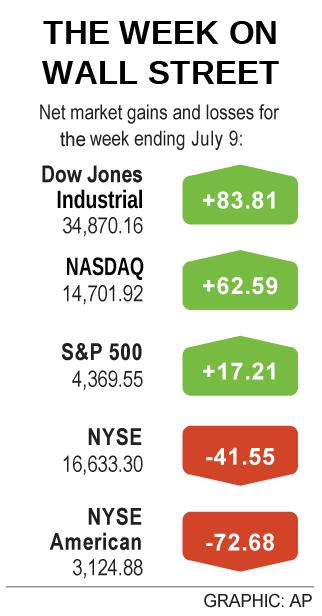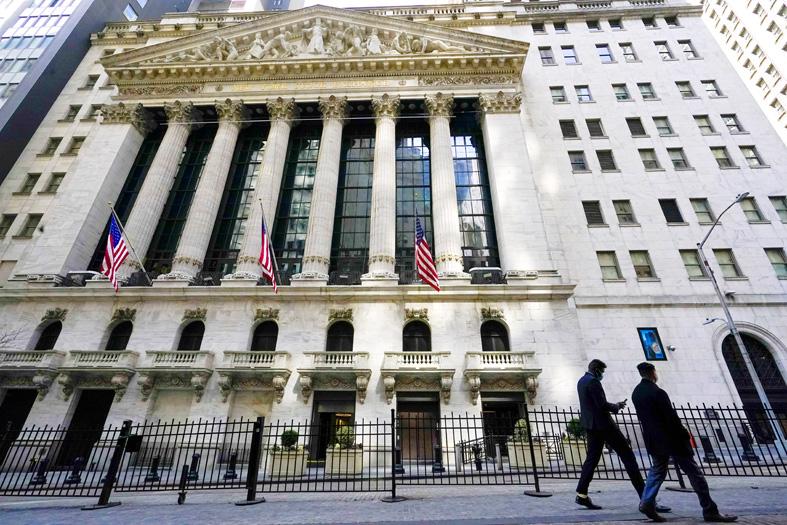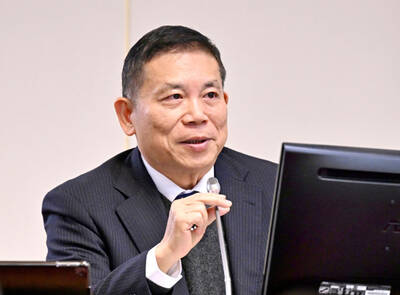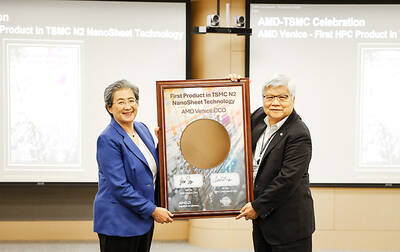The three major US stock indices rallied to record closing highs on Friday as financials and other economically focused sectors rebounded from a sell-off sparked by growth worries earlier in the week.
The rally allowed the indices to notch slight gains for the week, which also saw a sharp rally in US Treasuries as investors worried the US economic recovery might be losing steam as the Delta variant of SARS-CoV-2 spread globally.
US 10-year Treasury notes fell on Friday, halting an eight-day price rise, while the S&P 500 financials sector jumped 2.9 percent in the sector’s biggest daily percentage gain since March 1.

Financials led sector advances followed by energy, materials and industrials. Big banks, including JPMorgan Chase & Co, are to begin the second-quarter earnings season next week when they report results.
“What an about-face from all of the gloom and doom from yesterday,” said Jake Dollarhide, chief executive officer of Longbow Asset Management in Tulsa, Oklahoma.
“The US is in a bubble compared to the rest of the world, in a break from COVID. How long that’s going to last we don’t know,” he said, but “until that narrative changes, this is a market with a lot of free money and low interest rates.”

Photo: AP
The Dow Jones Industrial Average on Friday rose 448.23 points, or 1.3 percent, to 34,870.16, the S&P 500 gained 48.73 points, or 1.13 percent, to 4,369.55 and the NASDAQ Composite added 142.13 points, or 0.98 percent, to 14,701.92.
For the week, the Dow rose 0.2 percent, and the S&P 500 and NASDAQ each added 0.4 percent.
A big jump in quarterly earnings is expected to mark a peak for US profit growth in the recovery from last year’s COVID-19 pandemic-induced collapse. Investors are looking to US companies’ upcoming quarterly results and forecasts about the recovery in the second half of this year as some worry that the recent economic surge is already waning.
Analysts expect earnings growth of 65.8 percent for companies in the S&P 500 index in the quarter, up from a previous forecast of 54 percent growth at the start of the period, according to Refinitiv IBES data.
Among individual stocks, Levi Strauss & Co rose 1.4 percent as it forecast a strong full-year profit after beating quarterly earnings estimates on improving demand across its markets for jeans, tops and jackets.
US-listed shares of Chinese ride-hailing company Didi Global Inc (滴滴) gained 7.3 percent after four sessions of losses, as it was recently hit by an investigation from China’s Internet watchdog.
Volume on US exchanges was 8.51 billion shares, compared with the 10.5 billion average for the full session over the past 20 trading days.
Advancing issues outnumbered declining ones on the New York Stock Exchange by a 3.77-to-1 ratio; on NASDAQ, a 3.33-to-1 ratio favored advancers.
The S&P 500 posted 44 new 52-week highs and no new lows; the NASDAQ Composite recorded 60 new highs and 32 new lows.

Taiwan will prioritize the development of silicon photonics by taking advantage of its strength in the semiconductor industry to build another shield to protect the local economy, National Development Council (NDC) Minister Paul Liu (劉鏡清) said yesterday. Speaking at a meeting of the legislature’s Economics Committee, Liu said Taiwan already has the artificial intelligence (AI) industry as a shield, after the semiconductor industry, to safeguard the country, and is looking at new unique fields to build more economic shields. While Taiwan will further strengthen its existing shields, over the longer term, the country is determined to focus on such potential segments as

UNCERTAINTY: Innolux activated a stringent supply chain management mechanism, as it did during the COVID-19 pandemic, to ensure optimal inventory levels for customers Flat-panel display makers AUO Corp (友達) and Innolux Corp (群創) yesterday said that about 12 to 20 percent of their display business is at risk of potential US tariffs and that they would relocate production or shipment destinations to mitigate the levies’ effects. US tariffs would have a direct impact of US$200 million on AUO’s revenue, company chairman Paul Peng (彭雙浪) told reporters on the sidelines of the Touch Taiwan trade show in Taipei yesterday. That would make up about 12 percent of the company’s overall revenue. To cope with the tariff uncertainty, AUO plans to allocate its production to manufacturing facilities in

COLLABORATION: Given Taiwan’s key position in global supply chains, the US firm is discussing strategies with local partners and clients to deal with global uncertainties Advanced Micro Devices Inc (AMD) yesterday said it is meeting with local ecosystem partners, including Taiwan Semiconductor Manufacturing Co (TSMC, 台積電), to discuss strategies, including long-term manufacturing, to navigate uncertainties such as US tariffs, as Taiwan occupies an important position in global supply chains. AMD chief executive officer Lisa Su (蘇姿丰) told reporters that Taiwan is an important part of the chip designer’s ecosystem and she is discussing with partners and customers in Taiwan to forge strong collaborations on different areas during this critical period. AMD has just become the first artificial-intelligence (AI) server chip customer of TSMC to utilize its advanced

While China’s leaders use their economic and political might to fight US President Donald Trump’s trade war “to the end,” its army of social media soldiers are embarking on a more humorous campaign online. Trump’s tariff blitz has seen Washington and Beijing impose eye-watering duties on imports from the other, fanning a standoff between the economic superpowers that has sparked global recession fears and sent markets into a tailspin. Trump says his policy is a response to years of being “ripped off” by other countries and aims to bring manufacturing to the US, forcing companies to employ US workers. However, China’s online warriors